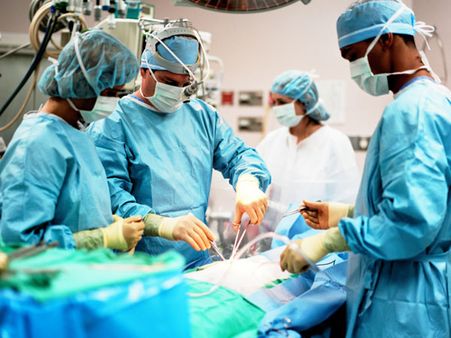Just In
- 2 hrs ago

- 3 hrs ago

- 6 hrs ago

- 13 hrs ago

Don't Miss
- Sports
 Who Won Yesterday's IPL Match 34? LSG vs CSK, IPL 2024 on April 19: KL Rahul Stellar Batting Show Decimate Chennai Bowling
Who Won Yesterday's IPL Match 34? LSG vs CSK, IPL 2024 on April 19: KL Rahul Stellar Batting Show Decimate Chennai Bowling - Finance
 Rs 17/Share Dividend: Record Date On April 26; Buy The ICICI Group Stock To Be Eligible?
Rs 17/Share Dividend: Record Date On April 26; Buy The ICICI Group Stock To Be Eligible? - Movies
 Chief Detective 1958 Episode 2 OTT Release Date, Time, Platform: When & Where To Watch? What To Expect? DEETS
Chief Detective 1958 Episode 2 OTT Release Date, Time, Platform: When & Where To Watch? What To Expect? DEETS - News
 Chinese President Xi Jinping Orders Biggest Military Reorganisation Since 2015
Chinese President Xi Jinping Orders Biggest Military Reorganisation Since 2015 - Education
 Exam Pressure Does Not Exist; Studying Punctually is Crucial; Says Aditi, the PSEB 2024 Topper
Exam Pressure Does Not Exist; Studying Punctually is Crucial; Says Aditi, the PSEB 2024 Topper - Automobiles
 Suzuki Swift Hatchback Scores 4 Star Safety Rating At JNCAP – ADAS, New Engine & More
Suzuki Swift Hatchback Scores 4 Star Safety Rating At JNCAP – ADAS, New Engine & More - Technology
 Dell Introduces AI-Powered Laptops and Mobile Workstations for Enterprises in India
Dell Introduces AI-Powered Laptops and Mobile Workstations for Enterprises in India - Travel
 Journey From Delhi To Ooty: Top Transport Options And Attractions
Journey From Delhi To Ooty: Top Transport Options And Attractions
International Epilepsy Day 2020: Refractory Epilepsy And Role Of Keto Diet In Treating Epilepsy
Every year, the second Monday in February is observed as International Epilepsy Day to promote awareness of epilepsy in more than 130 countries each year. The Day is a joint initiative by the International Bureau for Epilepsy (IBE) and the International League Against Epilepsy (ILAE).
People with epilepsy have seizures due to abnormal electrical activity in the brain. A seizure is a sudden and uncontrolled disturbance in the brain which can lead to changes in one's behaviour, feelings, movements, and levels of consciousness. Each seizure may not only be life-threatening to the patient, but repeated seizures can also cause significant brain damage.

An individual is said to have refractory epilepsy when the medications fail to bring their seizures under control. Refractory epilepsy is also known as uncontrolled, intractable, or drug-resistant epilepsy. Studies have shown as much as 10 percent of the world's population experiences seizure at least once in their lifetime, one-third of whom develop epilepsy [1].
Most newly diagnosed epileptic patients will become seizure-free on their initial anti-epileptic drug therapy; however, about 30 per cent continue to experience seizures despite trials with multiple anti-epileptic drugs and are diagnosed as having refractory epilepsy [2].
Refractory epilepsy can adversely impact one's life in various ways, interrupting the quality of life not only for the patient but also for those around them.

Causes Of Refractory Epilepsy
The reasons that lead to uncontrolled seizures are as follows [3]:
- Incorrect diagnosis
- Wrong treatment
- Certain triggers or lifestyle factors also affect seizure control despite the best treatment

Risk Factors Of Refractory Epilepsy
The commonly reported risk factors of the condition are as follows [4]:
- Epilepsy with structural lesions in the brain - certain specific lesions, certain developmental abnormalities in the brain
- Early epilepsy onset
- High seizure frequency
- Absence of response to the first 2 AEDs (Anti-Epileptic Drugs)

Treatment For Refractory Epilepsy
Patients with refractory epilepsy are usually treated with multiple anti-epileptic drugs and because of the chronic nature of this disease, comprehensive care for these individuals should include their socio-psychological needs as well as the management of the chronic side effects of these medications [5].
When the seizures persist even after the application of the treatment measures, other medical methods will be used to treat and manage the condition, such as epilepsy surgeries, vagal nerve stimulation (VNS) and a ketogenic diet [6].
1. Brain surgery
The most common form of treatments applied for refractory epilepsy is brain surgery. It is regarded as an alternative treatment for patients with refractory epilepsy [7]. The best candidates for surgery are individuals with focal epilepsy whose seizures arise from one area that is not critical for brain function. Brain surgery is further classified into two types, callosotomy and resective surgery [8].
- Callosotomy: Also known as corpus callosotomy, the palliative surgical procedure treats refractory epilepsy. In this procedure, the corpus callosum (it connects the left side of the brain to the right side) is cut through to limit the spread of epileptic activity between the two halves of the brain. When the corpus callosum is disconnected, the progression and generalisation of the seizure are prevented [9][10].
- Resective surgery: Resective surgery, the most common epilepsy surgery, is the removal of a small portion of the brain. In severely refractive cases an entire half of the brain may need to be resected [11]. The surgeon cuts out brain tissues in the area of the brain where seizures originate, usually the site of a tumour, brain injury or malformation [12].
2. Vagus nerve stimulation (VNS)
VNS is a nonpharmacologic tool that can be considered as adjunctive therapy for patients with refractory partial seizures, who are not candidates for epilepsy surgery or are unwilling to undergo the procedure [13][14]. The pulse generator of the VNS device is implanted beneath the skin in the left upper chest region and is connected to the left vagus nerve. Studies show 50 per cent improvement in seizure frequency in 37 per cent of patients in their first year of therapy [15].

Management Of Refractory Epilepsy
What is a keto diet?
With surgeries and therapies laid out for the management of the condition, health experts and doctors suggest the adoption of a keto or ketogenic diet.
The ketogenic diet (or keto diet, for short) is a low-carb, high-fat diet which can help improve one's health [16]. Ketogenic diets, studies assert, have benefits against diabetes, cancer, epilepsy and Alzheimer's disease. Keto diet involves drastically reducing carbohydrate intake and replacing it with fat, which puts your body into a metabolic state called ketosis [17][18].
When ketosis happens, your body becomes incredibly efficient at burning fat for energy. It also turns fat into ketones in the liver, which can supply energy for the brain [19]. Along with that, it can result in high reductions in blood sugar and insulin levels [20].

Keto diet and refractory epilepsy
The high-fat, low-carbohydrate diet has shown efficacy in the treatment of refractory epilepsy [21]. Although the mechanism of its anti-epileptic activity is not completely understood, new evidence suggests that the production of ketone bodies may diminish the hyperexcitability of neurons and improve seizure control [22]. Doctors usually recommend the ketogenic diet for children whose seizures have not responded to several different seizure medicines due to its effectiveness in managing the condition [23].
The ketogenic diet has been shown in many studies to be particularly helpful for some epilepsy conditions [24]. These include infantile spasms, Rett syndrome, tuberous sclerosis complex, Dravet syndrome, Doose syndrome, and GLUT-1 deficiency [25]. The studies further state that using a formula-only keto diet for infants and gastrostomy-tube fed children may lead to better compliance and possibly even improved efficacy [26].
Studies go on to point out that not only do the ketogenic diet formulas help in children with epilepsy on the ketogenic diet, but work better than a solid food ketogenic diet [27]. According to the study published in the journal Epilepsia, out of the 61 children who were on all-liquid ketogenic diets, 59 per cent of these children had a >90 per cent reduction in seizures, which is near twice the average response for children receiving the ketogenic diet overall [28].
However, there are side effects which should be discussed before considering the keto diet.

On A Final Note…
Polymers, electrical brain stimulation and prediction of seizures may be available in the future for treating patients with refractory epilepsy. Cell transplantation and gene therapy, although holding great promise, are still far from routine clinical use. Along with accurate medical treatment, it is very crucial to make conscious lifestyle changes including that in diet, sleep, self-care, stress-reduction, etc. While the patient along with the doctor figures out what works best for them, the person must not hesitate in reaching out for emotional support.
With inputs fromDr. Sowmya M Consultant Neurologist, Aster RV Hospital.

-
 healthExclusive: On International Epilepsy Day 2024, Let's Dispel Myths And Misconceptions About Epilepsy
healthExclusive: On International Epilepsy Day 2024, Let's Dispel Myths And Misconceptions About Epilepsy -
 disorders cureFatima Sana Shaikh Opens Up About Her Epilepsy Diagnosis During National Epilepsy Awareness Month
disorders cureFatima Sana Shaikh Opens Up About Her Epilepsy Diagnosis During National Epilepsy Awareness Month -
 wellnessScientists Develop AI Algorithms That Can Detect Brain Abnormalities, New Hope For Epilepsy Treatment
wellnessScientists Develop AI Algorithms That Can Detect Brain Abnormalities, New Hope For Epilepsy Treatment -
 kidsNational Epilepsy Day 2021: Epilepsy In Children: Causes, Symptoms And Does Treatment Help Ease The Condition?
kidsNational Epilepsy Day 2021: Epilepsy In Children: Causes, Symptoms And Does Treatment Help Ease The Condition? -
 disorders cureNational Epilepsy Day 2021: What Is Status Epilepticus? Causes, Symptoms, Diagnosis And Treatments
disorders cureNational Epilepsy Day 2021: What Is Status Epilepticus? Causes, Symptoms, Diagnosis And Treatments -
 healthLevel Four Epilepsy Care Centre Launched At Prominent Chennai Hospital
healthLevel Four Epilepsy Care Centre Launched At Prominent Chennai Hospital -
 wellnessInternational Epilepsy Day: Expert Speaks About Ketogenic Diet For Epilepsy
wellnessInternational Epilepsy Day: Expert Speaks About Ketogenic Diet For Epilepsy -
 wellnessInternational Epilepsy Day: Nutrition Tips For People Living With Epilepsy
wellnessInternational Epilepsy Day: Nutrition Tips For People Living With Epilepsy -
 wellness10 Tips On How To Live Well With Epilepsy
wellness10 Tips On How To Live Well With Epilepsy -
 disorders cureInternational Epilepsy Day: Epilepsy Causes, Symptoms, Triggers, Risk factors & Treatment
disorders cureInternational Epilepsy Day: Epilepsy Causes, Symptoms, Triggers, Risk factors & Treatment -
 disorders curePharmacogenetics In Treating Epilepsy
disorders curePharmacogenetics In Treating Epilepsy -
 basicsHow Does Epilepsy Affect Pregnancy?
basicsHow Does Epilepsy Affect Pregnancy?


 Click it and Unblock the Notifications
Click it and Unblock the Notifications



